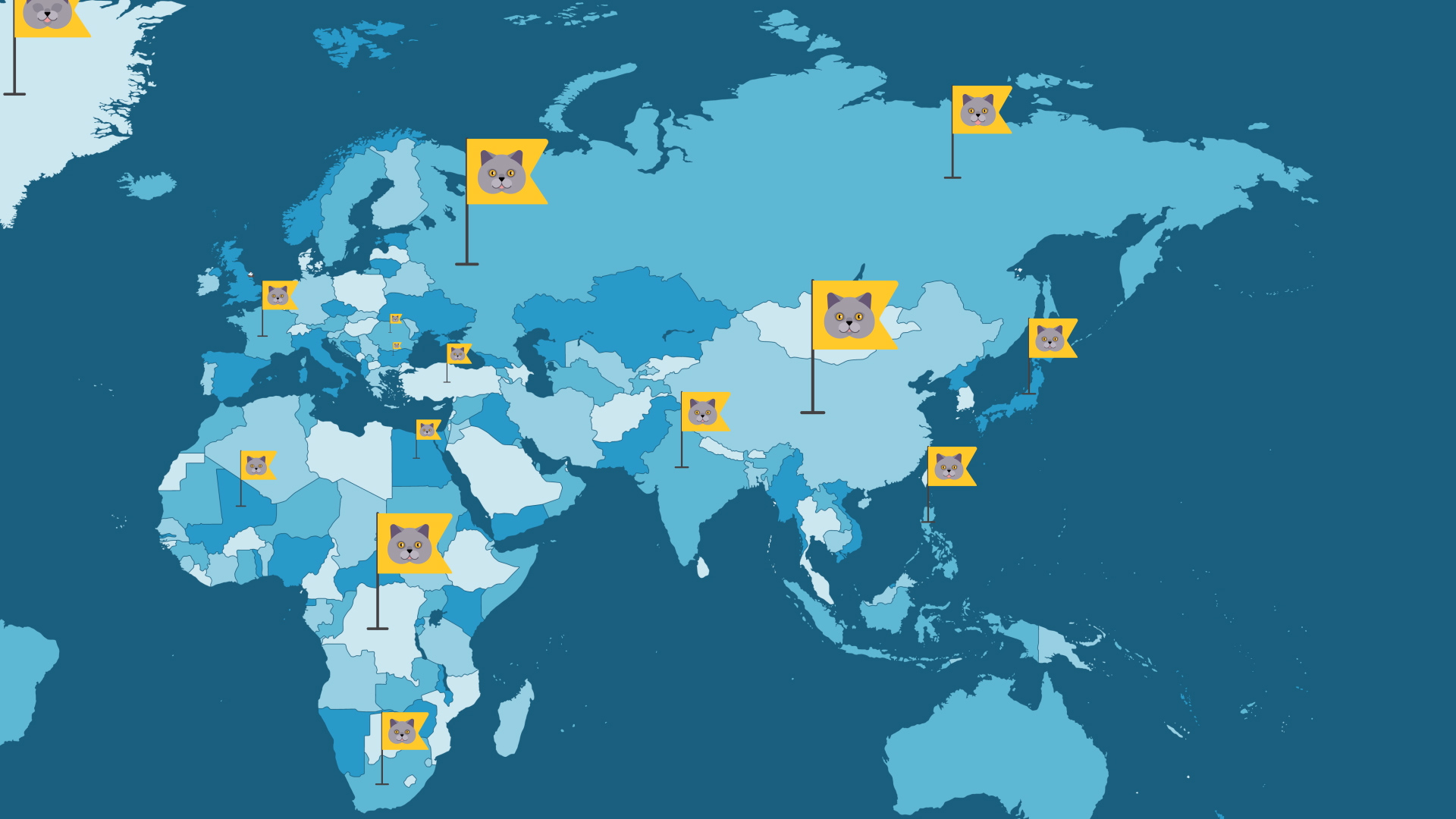- One-third of American households have at least one cat. That’s roughly 93.5 million house cats in the US, alone.
- You can find house cats on every continent except Antarctica. But that wasn’t always the case.
- Cats began to spread around the world about 10,000 years ago in what’s now modern-day Turkey.
- Visit Business Insider’s homepage for more stories.
Following is a transcript of the video.
You can find house cats on every continent except Antarctica. But that wasn’t always the case. How did cats make it across oceans and into households worldwide?
The secret lies in ancient cat DNA, which a team of scientists traced back thousands of years. They report their results in a paper recently published in the journal Nature.
Here’s how cats spread across the world.
It started around 10,000 years ago in what's now modern-day Turkey. DNA analysis shows this is where cats' wild ancestors likely originated. Wild cats proved to be effective rodent control for early farmers.
As the agricultural revolution spread, cats joined for the ride. By 2,500 BC, cats had reached Cyprus where no cats had existed before. Over the next few thousand years, they accompanied humans north into Bulgaria and Romania.
By 800 BC, cats had found their calling in Egypt. Cats weren't just an object of worship here. Egyptian cats, specifically, became popular among the Romans and Vikings who brought cats on their ships for pest control.
These two groups took the feline revolution by storm.
Helping cats spread across all of Africa, Europe, and Asia. By the time Europeans were sailing to the Americas cats were common shipmates.
Today, one-third of American homes have at least one cat. That's about 93.5 million house cats in the US, alone.
Now that they've conquered the world at humans' side, cats can rest easy.
EDITOR'S NOTE: This video was originally published on September 23, 2017.
